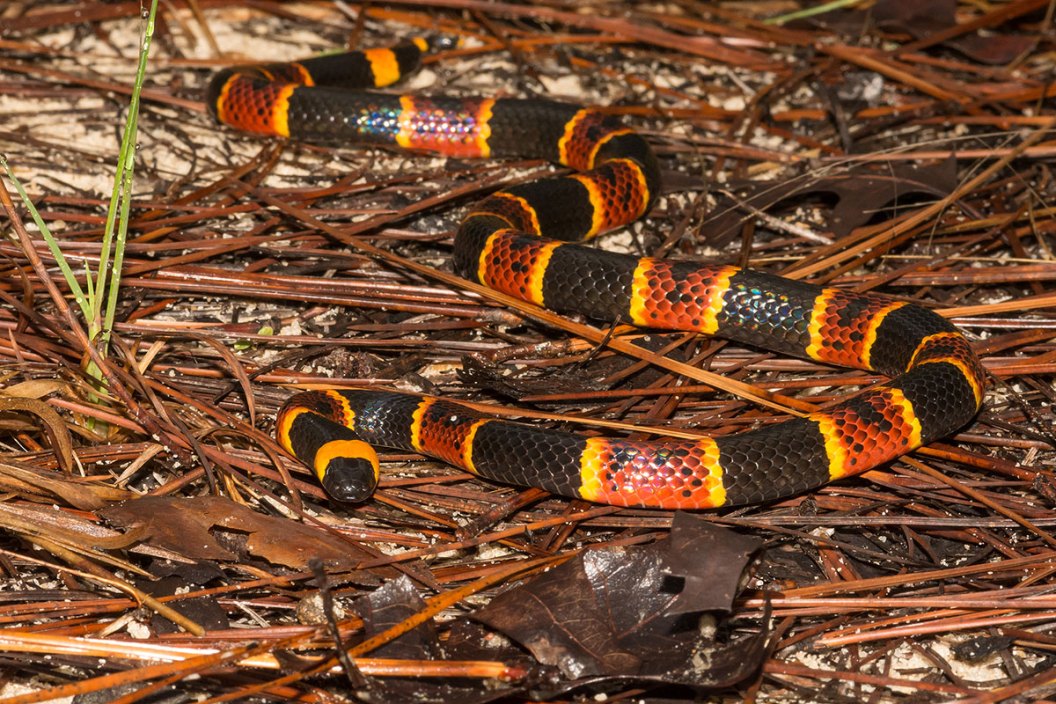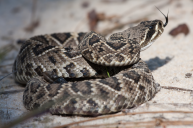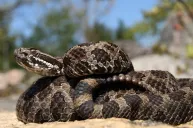Here are all of the species of snakes in North Carolina that you need to know.
North Carolina is a beautiful place to visit. There are mountains, forests, and an Atlantic Coast full of possibilities for anyone to enjoy, but don't let the fact that there are snakes in the Tar Heel State dissuade you from visiting. Especially sportsmen can find everything from deer and turkeys to black bear and doves to keep them hunting and happy for many years.
So then, let's take a minute to make a list for you of all the snakes you may see in NC when you visit. This way you can brag to your friends about your reptile identification prowess.
North Carolina is an excellent state for hunting, hiking, camping and other outdoor activities, so it behooves all outdoor persons to know what may or may not be dangerous in the woods and fields. The majority of these lists came courtesy of the info at Herps of North Carolina.
Non-Venomous Snakes of North Carolina
- Worm snake
- Scarlet snake
- Racer
- Ring-necked Snake
- Corn Snake
- Rat Snake
- Mud Snake
- Rainbow Snake
- Eastern Hognose
- Southern Hognose
- Eastern Kingsnake (including the Mole Kingsnake and Scarlet Kingsnake)
- Eastern Milksnake
- Coachwhip
- Northern Watersnake (including the Red-bellied Watersnake, Banded Watersnake, and Brown Watersnake)
- Rough Green Snake
- Pine Snake
- Glossy Crayfish Snake
- Queen Snake
- Pine Woods Snake
- Carolina Swamp Snake
- Brown Snake
- Red-bellied Snake
- Southeastern Crowned Snake
- Eastern Ribbon Snake
- Eastern Garter Snake
- Rough Earth Snake
- Smooth Earth Snake
It's worth it to share a few quick facts about some of these snakes that are commonly seen, but maybe not all that familiar with some folks. For instance, the corn snake get their name because they often inhabit barns and other agricultural areas where rodents gather to live. Corn snakes are great for their ability to prey on these damaging mice and rats and control their populations quite effectively.
Unfortunately, corn snakes are often mistaken for the venomous copperhead and killed for that reason.
Milksnakes grow to be considerably larger than their close relative the Kingsnake and are usually gray or brown with darker brown or reddish blotches on the back. Milksnakes prey on smaller snakes, lizards and mice and are often found around grassy fields in mountainous areas and are frequently found hiding under large stones.
The Scarlet Kingsnake is thought to be one of the most beautiful snakes around, but unfortunately it closely resembles the venomous Eastern Coral Snake, another resident of NC. Scarlet Kingsnakes are found inside of rotting logs, under bark, and residing in other leftover tree parts in the pine forests of the Coastal Plain, but they are rare in the Piedmont region.
Between these two species of snakes (among others) are so similar, we get the phrase we've all heard, and now know why: "Red on black, friend of Jack. Red on yellow, kill a fellow."
Venomous Snakes of North Carolina
There are six species of venomous snakes residing in North Carolina and they can all be dangerous to humans.
- Eastern Coral Snake
- Copperhead
- Cottonmouth
- Eastern Diamondback Rattlesnake
- Timber Rattlesnake
- Pygmy Rattlesnake
Coral snakes are members of the family Elapidae, which includes the cobras and mambas. A couple of things to remember about the coral snake is that it is considered extremely rare in North Carolina and officially listed as endangered by the state. One thing that distinguishes it from the non-venomous Scarlet Kingsnake is the Scarlet's red snout, whereas the snout of a coral snake is black.
Between the coral snakes, copperheads, cottonmouths, and rattlesnakes you may begin to think twice about visiting North Carolina. Almost all of the these snakes can be avoided by knowing where they live and staying away from those areas. In cases where humans find themselves confronted by one of these snakes the person should remain calm and try to leave the scene.
Some of these snakes can grow to five feet in length or more, and in the case of the Diamondback rattlesnake the venom is very destructive to tissues and potentially very deadly.
Snakes Found in North Carolina
While snake bites are rare, they do occur. The pit vipers of North Carolina can be very dangerous. Knowing the contact information of standard institutions like the Carolinas Poison Center can be instrumental in treating a dangerous bite to keep it from becoming a worst case scenario. This all begins with snake identification, especially of venomous species.
?Campers, hikers, hunters and other outdoorsmen can do a great deal towards keeping safe by understanding the ecosystems where these snakes live. Spots like woodpiles, leaf litter, and rocky outcroppings are prime snake locations. Staying on marked trails is a must for hikers, especially in high risk areas where dangerous snakes are known to live.
North Carolina is a beautiful, welcoming state and loves to greet its guests well. Learning to deal with these reptiles before they become problems is our responsibility as guests, and goes a long ways towards keeping the fun in the outdoors.
For home snake protection, check out this repellant found on Amazon.
Looking for a little more or even hot lunch for your hunting blind? Follow my webpage, or on Facebook and YouTube.
NEXT: MORE THAN 30 RATTLESNAKES FOUND HIDING UNDER TEXAN'S HUNTING CABIN
WATCH





